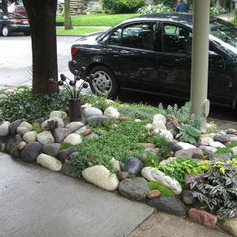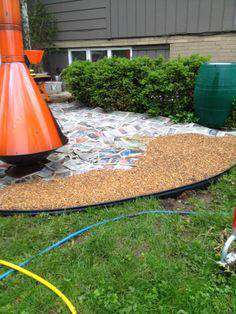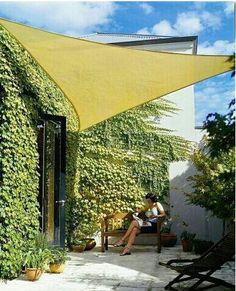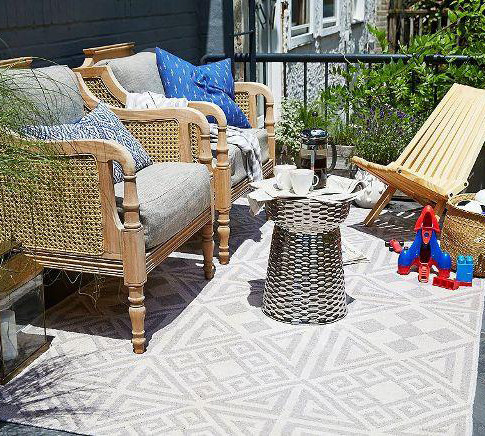How to Create a Terrific Yard (Without a Lot of Dough)
- Angela Pauldine, Director of Communications
- Jun 7, 2018
- 5 min read
Updated: Oct 12, 2022
We were so lucky to have Amanda Thomsen, author of the gardening book Kiss My Aster: A Graphic Guide to Creating a Fantastic Yard Totally Tailored to You, present two seminars for us! At Sulzer Regional Library and Avalon Public Library, she shared landscape ideas, gardening tips, and money-saving tricks with our curious members. So much valuable advice and so many creative ideas were shared that we want to make sure you have the info whether or not you were able to attend!
Here are the notes we took during Amanda's presentation along with images she shared:
Lawns
Lawns don't have to be a monoculture! They can have more than one species of plants (meaning more than just turf), and in fact, allowing other species in your yard is more natural, attracts pollinators like butterflies, and can be low-maintenance. A shot of Amanda's lawn below shows she has a diversity of species growing, making her lawn a natural ecosystem.

Consider planting native perennial grasses and plants. Maybe even consider a turf-free yard!
(click images to expand)
Whatever kind of grass you have, turf or not, it's important to aerate your lawn at least once a year (for clay soil, which most of us have in Chicago):

Hedges
Hedges were planted in front of many bungalows and vintage homes. They should be trimmed so that the base of the hedge is wider than the top, so sun can reach the base of the plant, and so that snow doesn't accumulate on top in the winter.

Tall hedges, in general, can be difficult to maintain. For example, if you like the look of evergreens but don't have the budget for it, hornbeam hedges are an inexpensive alternative--but if trimmed incorrectly, they can flop over! You might need to hire a good pruner for tall hedges.

Grass hedges are much easier to maintain but they need a LOT of sun.

(click images to expand)
Plant Suggestions
"Limelight" white hydrangeas are great perennials for sunny or shady spots in Chicago, and they will come back with big blooms every year. But oddly enough, Amanda told us it's nearly impossible to get blue and pink hydrangeas to rebloom in Chicago (that goes for most plants with big floppy flowers... except limelight hydrangeas!).

Amanda highly recommends ninebark for its resiliency. If you have a tough spot in your yard where nothing seems to grow, try this problem-solving ninebark! It blooms pretty light-pink flowers.
(click images to expand)
Shiso, also called perilla, is a Japanese herb that's great for ground cover. Be strategic where you plant it--shiso spreads quickly and is tightly packed, meaning it's good for choking out weeds but you don't want it to choke out your other plants! However, Amanda has some in her yard, and she says it's quite easy to pull it up and prevent it from spreading where you don't want. She also says it has a wonderful smell!

Additionally, yew trees are a type of evergreen that regrows after being chopped down or pruned. No other evergreen does this, so Amanda recommends yew trees to get the most bang for your buck!

Hellstrips
Garden experts like Amanda lovingly refer to parkways as "hellstrips" because trying to landscape that strip of land in front of your house between the street and sidewalk is hell! The heat from surrounding pavement, road salt splashed onto it in winter, and traffic from bikes, feet, and paws make parkways challenging to plant in. But, you can find lists of plants and trees that do well in these extreme conditions.
For Chicago, search for salt tolerant plants. Perennial sedums, pictured in the third image below, are resilient plants for hellstrips--not only are they are salt tolerant, but if a bike, paw, or foot breaks some of its stems, those broken stems will turn into new plants!
Amanda also suggests incorporating large rocks or boulders to make it difficult for people and pets to trample through, and to prevent them from even trying!
(click images to expand)
Patios
Using her own patio as an example, Amanda shared a time and money saving method for creating a DIY patio.
Amanda Thomsen's "Quick 1-Hour Patio"
Edge out the area that will be your new gravel patio. You'll see in the pictures below that she used rubber edging, but given the chance to do it over, she said she would use an edging tool instead because the rubber edging sticks up too high.
Cover the grass in that area with sections of dampened newspaper. This will kill the grass underneath, which you need to do, and prevent any weeds from popping up.
Cover the newspaper with gravel, then set up your outdoor furniture!
Over time, the newspaper will disintegrate underneath the gravel. This is why Amanda does not recommend using landscaping fabric--since it doesn't disintegrate, it eventually resurfaces (and it's expensive!).
She did this a few years ago and reports that her patio is still intact!
(click images to expand)
Dampened newspaper, rather than landscape fabric, is also best for placing around plants to kill weeds before mulching!
(click images to expand)
Amanda shared more inexpensive, yet effective, ideas for patio design. To create a nice shady spot, you can use "shade sails," which are easy to find in all different sizes and colors, easy to install, and don't cost much.
(click images to expand)
Spending about $40 on an outdoor rug might be all it takes to complete the look of your patio, and make it feel cozy and intimate.
(click images to expand)
Other inexpensive decorating ideas, like adding lights or painting a design on concrete, can make a huge impact to your outdoor living area.
(click images to expand)
Tools
Here are some tools and supplies Amanda recommends:
(click images to expand)
Fiskars Deluxe Stand-Up Weeder (great for dandelions) & Flame Weeder
(click images to expand)
Weasel Edge Chopper & Blue Tarp (use to prep for flower beds - cover ground for a few weeks where you want the bed to be, and there will be no grass or weeds when you lift it up!)
(click images to expand)
Pitt Moss®, Grass B Gon (use instead of Weed B Gon for problems of grass growing where you don't want it) & Corn Gluten (proven to prevent crabgrass, all natural, and harmless to pets and children)
(click images to expand)
Amanda mixed corn gluten into her patio gravel and hasn't had any weeds pop up!
Grow Bags (cheap and convenient containers and beds) & Hose Timers
(click images to expand)
Other Notes
Speaking of containers, the narrow gangway on the side of your house could benefit from container plantings since there's no room to plant in the ground! (Just be sure to use shade-loving plants if your gangway doesn't get much sun.)

Composting is very simple and inexpensive to do, and it has many benefits according to the EPA, including: enriching soil, helping retain moisture and suppress plant diseases and pests, reducing the need for chemical fertilizers, encouraging the production of beneficial bacteria and fungi that nourish soil, reducing methane emissions from landfills, and lowering your carbon footprint. A tip from Amanda: Your compost bin or pile needs an area of 3'x3' to really get cooking!

Focal points in your landscape can help distract from problem areas! For example, Amanda's backyard has a tree with an unsightly bald spot, so she strategically placed a mannequin in front, and now no one even notices the bald spot!

Finally, the main point Amanda makes in both her book and in her presentation:
Just have fun! It is YOUR yard, so do what YOU like!
Thank you to Amanda for giving two fabulous presentations, sharing this information, and providing images for this blog!

Amanda Thomsen, Kiss My Aster www.kissmyaster.com asterkissing@gmail.com
Instagram: @kissmyaster Twitter: @kissmyaster Facebook: @kissmyasterblog






































































